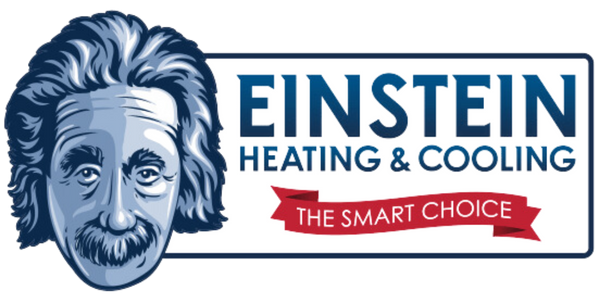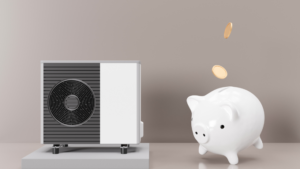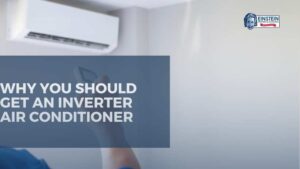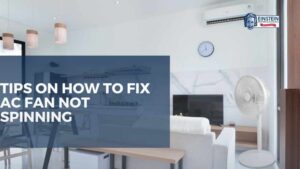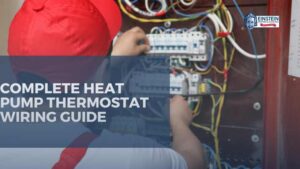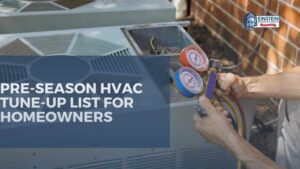A malfunctioning thermostat can disrupt the comfort of your home, especially during extreme temperatures. If you find yourself in a situation where your thermostat is not working as expected, it’s crucial to identify the root cause and address it promptly. In this comprehensive guide, we will explore various factors that may lead to a thermostat not working and provide troubleshooting steps to help you regain control over your home’s climate.
Why Is My Thermostat Not Working?
Power Supply Issues
- Insufficient Power Source: The thermostat relies on a power source to function correctly. If it is not receiving adequate power, it may not operate as intended. Check the power source, and if necessary, replace batteries or troubleshoot the wiring.
- Tripped Circuit Breaker: A tripped circuit breaker can also be a culprit. Examine the circuit breaker panel and reset any tripped breakers related to the HVAC system.
Incorrect Thermostat Settings
- Temperature Settings: Verify that the thermostat is set to the desired temperature. Sometimes, a simple adjustment to the temperature setting can resolve issues of apparent malfunction.
- Mode Selection: Ensure that the thermostat is set to the appropriate mode, such as heating or cooling, based on the current climate needs. Incorrect mode selection can lead to the perception of a non-functional thermostat.
Sensor Calibration Issues
- Location of the Thermostat: The thermostat’s sensor may not accurately reflect the temperature if it is poorly located. Ensure that the thermostat is placed away from direct sunlight, drafts, and electronic devices that could influence its readings.
- Sensor Cleaning: Over time, dust and debris can accumulate on the thermostat sensor, affecting its accuracy. Gently clean the sensor with a soft brush to remove any obstructions.
Wiring Problems
- Loose Wiring: Inspect the thermostat’s wiring for any loose connections. If you find any, tighten them carefully. Loose wiring can disrupt the communication between the thermostat and the HVAC system.
- Damaged Wiring: Examine the wiring for any signs of damage, such as fraying or exposed wires. Replace any damaged wiring to ensure a secure and effective connection.
HVAC System Issues
- Faulty Furnace or AC Unit: A malfunctioning furnace or air conditioning unit can impact the thermostat’s performance. Schedule a professional inspection and maintenance of your HVAC system to address any underlying issues.
- Incompatible Systems: Ensure that your thermostat is compatible with your HVAC system. Incompatibility can lead to communication breakdowns, resulting in a non-functional thermostat.
Software or Firmware Glitches
- Thermostat Software Update: Check if there are any available updates for your thermostat’s software or firmware. You can also try upgrading to eco-friendly HVAC systems. Updating the software can often resolve glitches and improve overall performance.
- System Reboot: Sometimes, a simple reboot can clear out temporary glitches. Follow the manufacturer’s guidelines to restart your thermostat and see if it resolves the issue.
Faulty Thermostat Components
- Aging Thermostat: Over time, the internal components of a thermostat can wear out. If your thermostat is old and showing signs of wear, it may be time to consider a replacement.
- Defective Thermostat Components: Internal components like relays and switches can become defective. If troubleshooting steps do not resolve the issue, consult a professional to diagnose and replace faulty components.
Seeking Professional Assistance
If you have diligently followed the troubleshooting steps outlined above and your thermostat is still not working, it may be time to seek professional assistance. A certified HVAC technician possesses the expertise to diagnose complex issues and perform in-depth assessments of your heating and cooling systems. Here are some considerations when deciding to call in the professionals:
Professional Inspection
- Thorough Examination: A qualified HVAC technician can conduct a comprehensive inspection of your thermostat, HVAC system, and associated components. Their experience enables them to identify subtle issues that may be challenging to diagnose without specialized knowledge.
- Testing and Analysis: HVAC professionals have access to specialized tools and equipment for testing and analyzing the performance of your thermostat and the entire heating or cooling system. This ensures a more accurate diagnosis of the problem.
System Calibration and Adjustment
- Calibration Expertise: Technicians can calibrate the thermostat and sensors with precision, addressing any discrepancies in temperature readings. This level of calibration is often beyond the capabilities of homeowners without specialized tools.
- Advanced Adjustments: HVAC professionals can make advanced adjustments to the HVAC system, ensuring optimal compatibility with your thermostat. This may involve adjusting settings in the furnace, air conditioning unit, or other components for seamless integration.
Replacement of Faulty Components
- Component Identification: A professional can identify and replace specific components within the thermostat or HVAC system that may be causing the malfunction, especially if you’re facing “thermostat not turning on” issues. This may include faulty relays, switches, or other internal elements that are not easily accessible to the average homeowner.
- Guaranteed Replacement Parts: When components need replacement, HVAC professionals use high-quality, manufacturer-approved parts, ensuring the longevity and reliability of the repaired system.
System Upgrade Recommendations
- Modern Technology Integration: HVAC technicians stay updated on the latest technological advancements in thermostats and HVAC system design. If your thermostat is outdated or incompatible with modern systems, they can recommend and install a more efficient and technologically advanced replacement.
- Energy Efficiency Consultation: Professionals can provide valuable insights into improving energy efficiency. This may include suggestions for upgrading to a programmable thermostat or integrating smart home technology to optimize energy consumption.
Preventive Maintenance Plans
- Regular Servicing: HVAC professionals often offer preventive maintenance plans to keep your heating and cooling systems in top condition. Regular servicing can prevent future issues, prolong the lifespan of your equipment, and ensure optimal energy efficiency.
- Seasonal Checkups: Scheduled checkups before the start of each heating or cooling season can catch potential problems early, reducing the likelihood of a non-functional thermostat in the future.
How to Fix Thermostat Not Working
Check the Power Source
If your thermostat is unresponsive, the first step is to inspect the thermostat’s power source. A lack of power can be a common culprit for a non-functioning thermostat.
Verify the Power Connection
- Ensure that the thermostat is properly connected to the power source. Check for any loose wires or connections.
Replace Batteries
- If your thermostat is battery-powered, replace the batteries with fresh ones. Dead or low batteries can cause the thermostat to stop working.
Examine the Circuit Breaker
A tripped circuit breaker can disrupt power to your thermostat, leading to functionality issues.
Locate the Circuit Breaker Box
- Find your home’s circuit breaker box and identify the breaker connected to the HVAC system or thermostat.
Reset the Circuit Breaker
- If the breaker is in the “off” position, reset it by turning it to the “on” position. A tripped breaker may be the reason your thermostat is not working.
Confirm Temperature Settings
Sometimes, the thermostat may appear faulty when the temperature settings are not configured correctly.
Set Temperature Correctly
- If you’re searching for solutions to “thermostat not turning on,” check if the set temperature on the thermostat is appropriate for the current season. Incorrect temperature settings can cause the thermostat not to activate the heating or cooling system.
Test Mode Selection
- Ensure that your thermostat is set to the correct mode (heat, cool, or auto) based on your comfort needs. An incorrect mode selection can result in a non-functioning thermostat.
Clean and Calibrate Thermostat
Dirt, dust, or calibration issues can impact the accuracy and performance of your thermostat.
Clean Thermostat Components
- Gently clean the thermostat’s components, including buttons and sensors, using a soft brush or compressed air. Accumulated dirt can hinder proper functionality.
Calibrate the Thermostat
- Some thermostats allow for calibration adjustments. Refer to your thermostat’s manual to calibrate it and ensure accurate temperature readings.
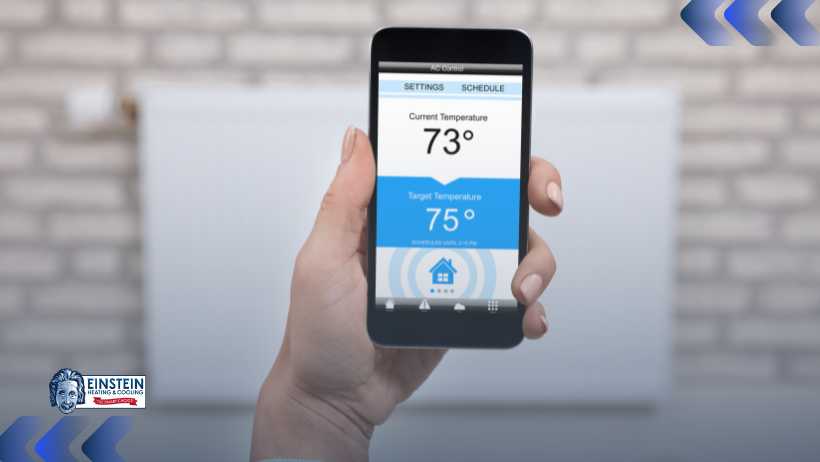
Inspect Wiring and Connections
Faulty wiring or loose connections can lead to a non-responsive thermostat.
Inspect Wiring
- Carefully examine the wiring behind the thermostat. Look for any signs of fraying, damage, or loose connections. Replace or reattach any compromised wiring.
Check Compatibility
- Ensure that your thermostat is compatible with your heating and cooling system. Incompatible thermostats may not function properly.
Thermostat Location Matters
The placement of your thermostat within your home can influence its effectiveness to avoid the common issue of “thermostat stopped working.”
Avoid Direct Sunlight and Drafts
- Ensure that the thermostat is not exposed to direct sunlight or drafts. Extreme temperatures or airflow can impact its accuracy.
Ideal Placement
- Place the thermostat on an interior wall, away from windows and exterior doors. This helps provide more accurate temperature readings and efficient system operation.
Professional Inspection
If all else fails, it might be time to seek professional assistance.
Hire an HVAC Contractor
- If you are unable to identify or fix the issue on your own, it’s advisable to consult a professional HVAC technician. They can conduct a thorough inspection and provide solutions tailored to your system.
Maintenance Tips for Thermostat Use
Keep it Clean and Dust-Free:
Regular Dusting:
- Dust and debris can accumulate on the thermostat over time, affecting its sensors and performance.
- Use a soft, dry cloth to gently wipe the surface of the thermostat to remove any dust or dirt.
Air Vent Maintenance:
- Ensure that the air vents around the thermostat are clean and unobstructed.
- Use a small brush or a vacuum cleaner to clear any dust or debris from the vents to maintain proper airflow.
Check for Proper Placement:
Avoid Direct Sunlight:
- Thermostats placed in direct sunlight may give inaccurate temperature readings.
- Ensure your thermostat is installed in a location where it is not exposed to direct sunlight to prevent overheating.
Keep Away from Drafts:
- If your thermostat stops working, make sure to keep it away from drafts. Avoid placing the thermostat near drafts or vents that may influence temperature readings.
- Check for any air leaks around the thermostat and seal them to maintain accuracy.
Verify Temperature Accuracy:
Regular Calibration:
- Periodically check the thermostat’s temperature accuracy using a separate thermometer.
- If a discrepancy is found, recalibrate the thermostat according to the manufacturer’s instructions.
Use a Programmable Thermostat:
- Invest in a programmable thermostat to set temperature schedules, reducing the need for constant manual adjustments.
- This not only enhances comfort but also extends the lifespan of the thermostat.
Battery Replacement:
Monitor Battery Levels:
- Many thermostats are powered by batteries, and low battery levels can lead to malfunctions.
- Regularly check the battery status and replace them as needed to prevent unexpected shutdowns.
Monitor HVAC System Performance:
Regular HVAC System Check:
- The thermostat works in conjunction with your HVAC system, so it’s essential to ensure the overall health of the system.
- Schedule regular maintenance for your heating and cooling system, including cleaning filters and inspecting ducts.
Address HVAC Issues Promptly:
- If you notice any irregularities with your HVAC system, such as strange noises or reduced airflow, address them promptly.
- Delaying necessary repairs can put additional strain on the thermostat and lead to malfunctions.
Conclusion
A non-functional thermostat can stem from various factors. You can maintain a comfortable and energy-efficient home environment by systematically addressing each potential cause and considering professional assistance from Einstein Heating and Cooling when needed. Regular maintenance and periodic checkups are key to preventing future thermostat malfunctions and ensuring the optimal performance of your heating and cooling systems.
